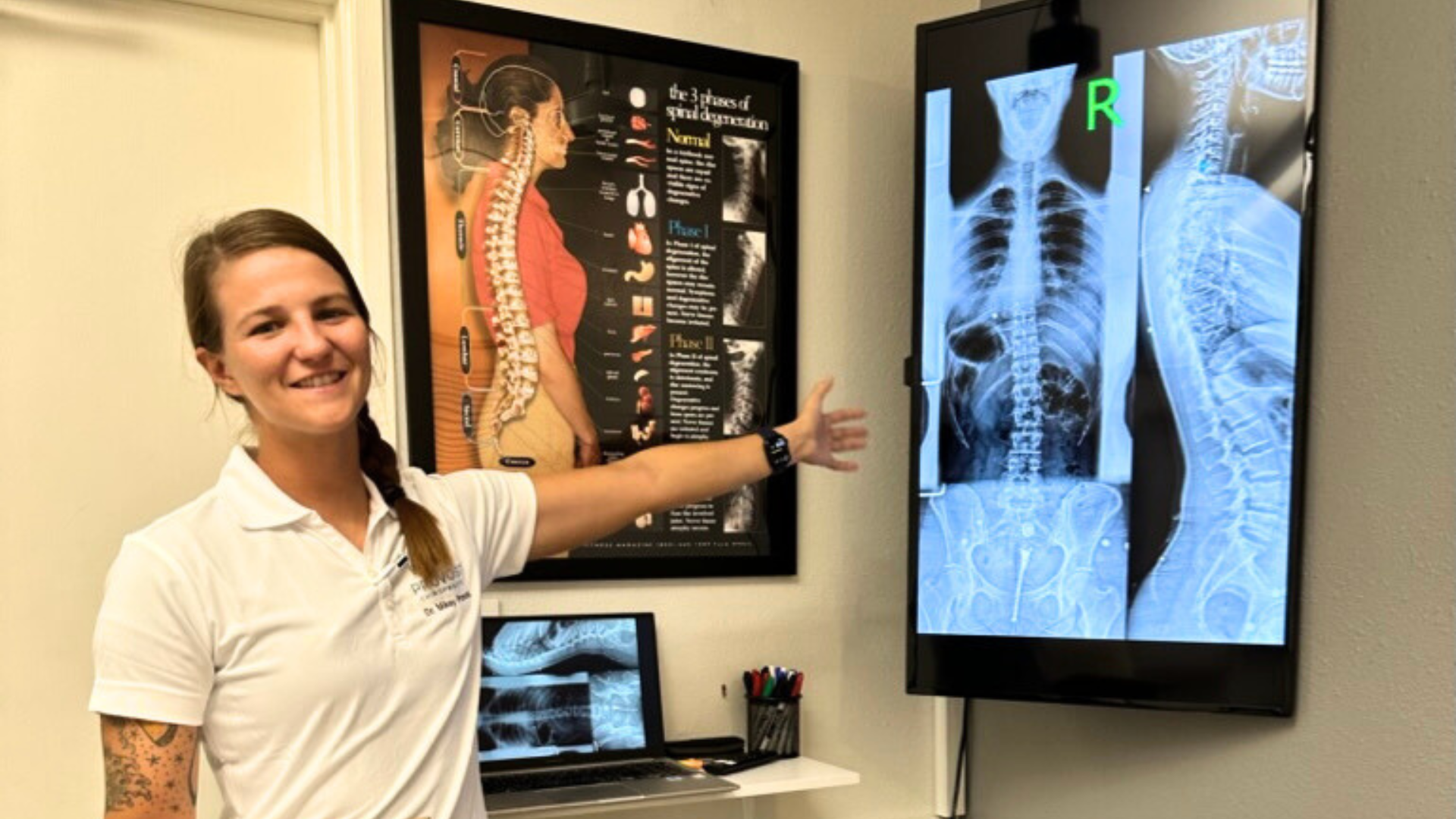Many chiropractors do not utilize x-rays in their patient care, but I believe it’s a vital aspect of my practice and this is why. The purpose of an x-ray is to be able to visualize the bony anatomy in a given individual. Medically speaking, they are looking for five main things with an x-ray: fracture (or break), dislocation, infection, arthritis, or tumors. When these things are not visualized, a radiograph will be considered “within normal limits” or “unremarkable”. What happens if you have a “normal” x-ray, but are still experiencing pain? Luckily, those are not the only things that a chiropractor is looking at on an x-ray.
A Gonstead chiropractor is known for taking full-spine x-rays on every patient, both front facing (anterior to posterior) and a side view (lateral). It is important to have opposing views, as this creates almost a 3D visualization for your unique anatomy. I can’t tell you how many times I am surprised when looking at an x-ray. Sometimes a person’s spine is significantly less healthy than I would assume by their age or lifestyle.Sometimes it’s the opposite, in that they’ve beat up their body over the years and yet the spine has been able to adapt and handle all this abuse. I’ve seen dozens of patients that have congenital anomalies (unique parts of their spine that were caused while they are developing) that cause them to have more (or less!) bones than the average person, fusions (bones that should be separate, but are one), legs that are longer on one side, and even fractured vertebrae that they were born with! Adjusting in these areas can be done safely, but only if the chiropractor knows exactly what they are dealing with.
On the front view, I am mostly looking for symmetry. I want a person to be completely straight up and down, I want to see that their shoulders and hips are level. There are also circles in the pelvis that should be the exact same shape and size. As much as I want each patient to look like this, no one does. Most people have slight curvatures in their spine, hips or shoulders (or both!) are not exactly level. While this is a normal sight to see, asymmetry in the spine will cause uneven wearing down of one side or the other. The joints that are in between every level of the spine as well as in all your extremities (arms and legs) are designed to move a certain way, and the uneven wear is what causes degeneration. Degeneration is inevitable if we live long enough, but the uneven wear speeds up that process dramatically.
The side view of an x-ray gives a lot of information as well. This view is not meant to be symmetrical, but it is meant to be balanced. There are 3 curves that should be visualized, and the overall balance will keep a person’s head directly over their pelvis. The curves in the spine are the initial shock absorbers as we walk around our day to day life. Walking, bumps in the road while driving, extra impact with sports, all put pressure into our spine, and each of these activities is also fighting gravity at all times. The curves, while vital, are the first thing to be affected when we start to have issues within our spine. In between each bone in the spine are vertebral discs. These are not visualized on the x-ray, but the space they take up is, and can tell us exactly the size and how they are aligned. The angle at which the disc lies in a spine when a person is lying facedown is incredibly variable, especially given that almost no one in our society today is considered textbook normal.
The simple way to describe chiropractic is that we are moving a bone that is stuck in the wrong way, back to the right way, in order to relieve nerve pressure. There is a little bit more to it than that, but we will get into that on another post. The best way to do this is to know exactly which bone and/or joint is misaligned, how exactly it is misaligned, and what technique is the best way to get it realigned. There are a number of tools and analysis techniques that a principled chiropractor will use when coming up with the answer to these questions, but the benefit of x-ray is that there is no guesswork. It is simply there, in black and white, the exact roadmap of a person’s spine.
A lot of chiropractors who do not use x-ray will feel areas of your spine with problems (this is valid, we spend 4 years in chiropractic school honing this ability) or adjusting the area where you point to pain. The problem with only focusing on pain is that only 10% of your spinal nerves communicate pain, which makes it an unreliable symptom. In my experience, pain is the last thing to show up when there is a problem, and it’s the first thing to leave when you start to address the problem. Pain is a poor indicator of overall health. Feeling for the problem (also called palpating) is a reliable analysis method, but it is not entirely objective. The longer a chiropractor is in practice, the better they will be, but bottom line this is a skill that needs to be learned, practiced, and still won’t ever be 100% accurate. I strongly believe that it’s important to analyze with my hands, and then follow up with an x-ray. This covers all the bases. If my hands and the x-ray disagree, I can use other methods to dig even deeper to determine the problem area. More on those in another post!

